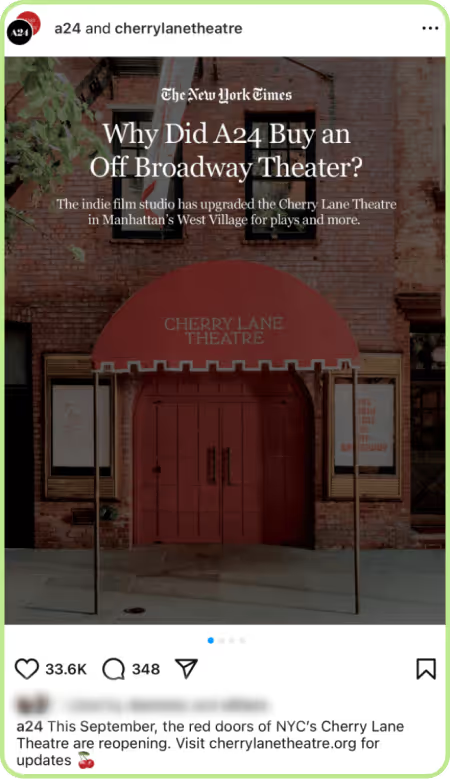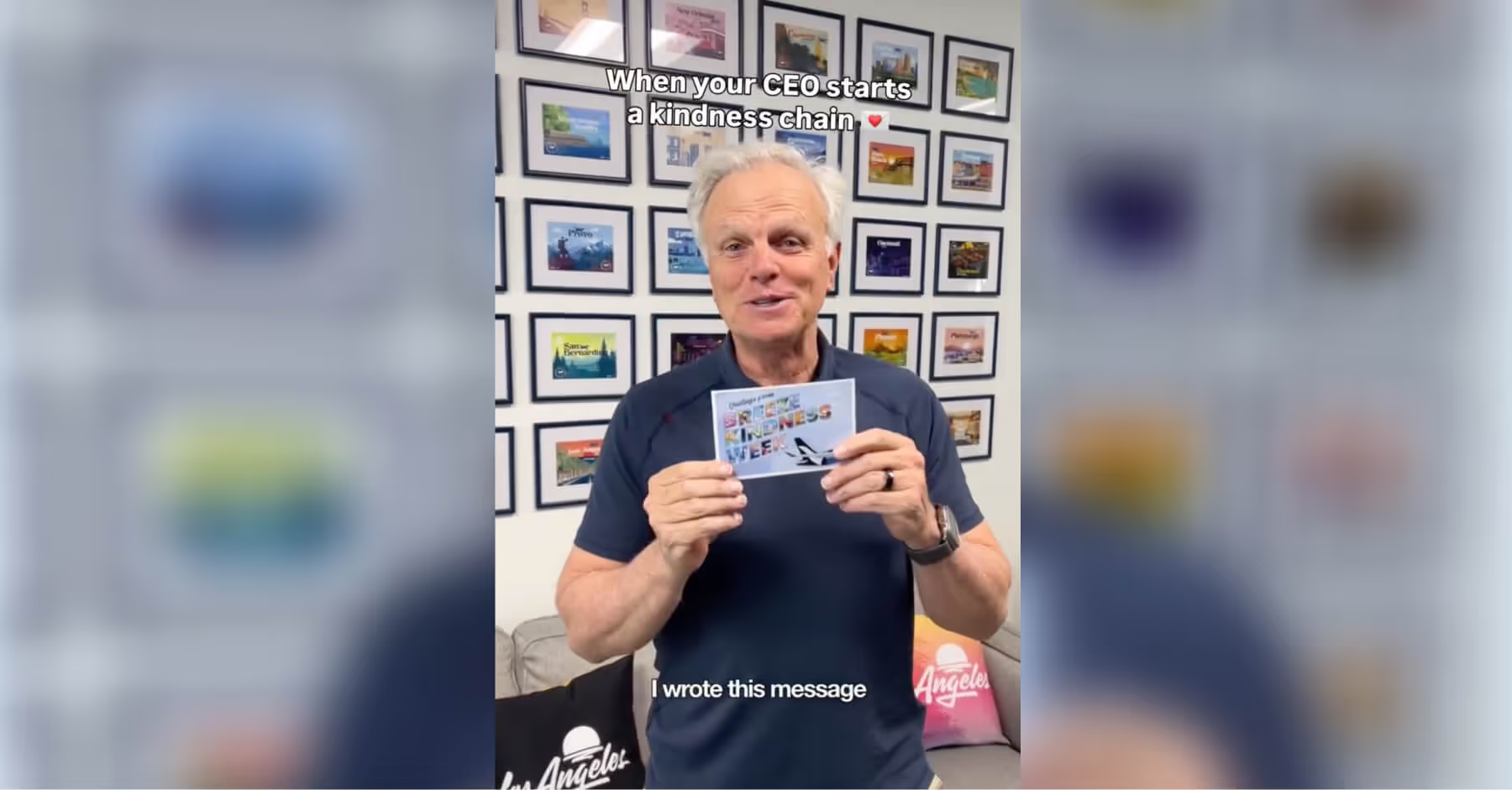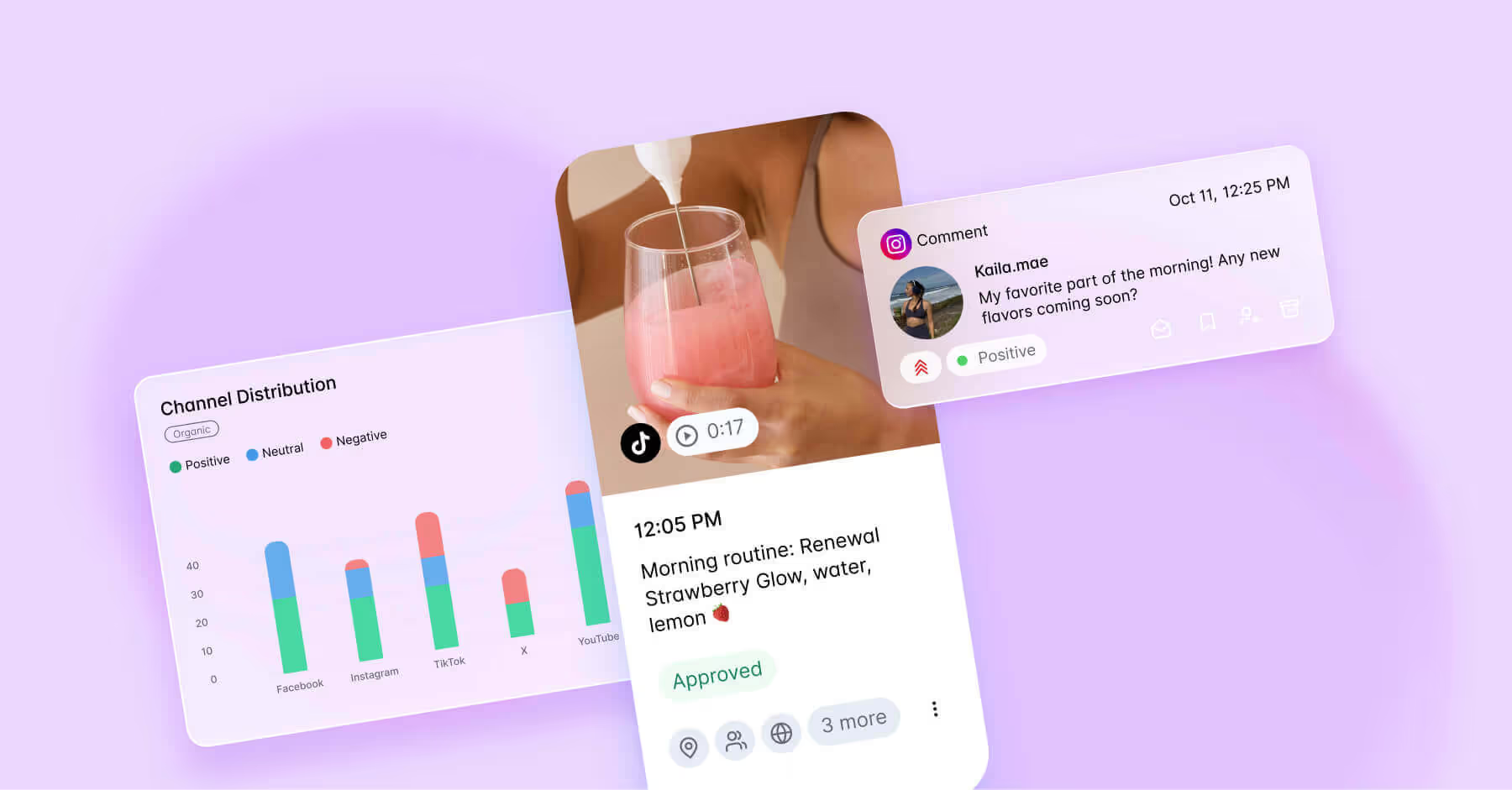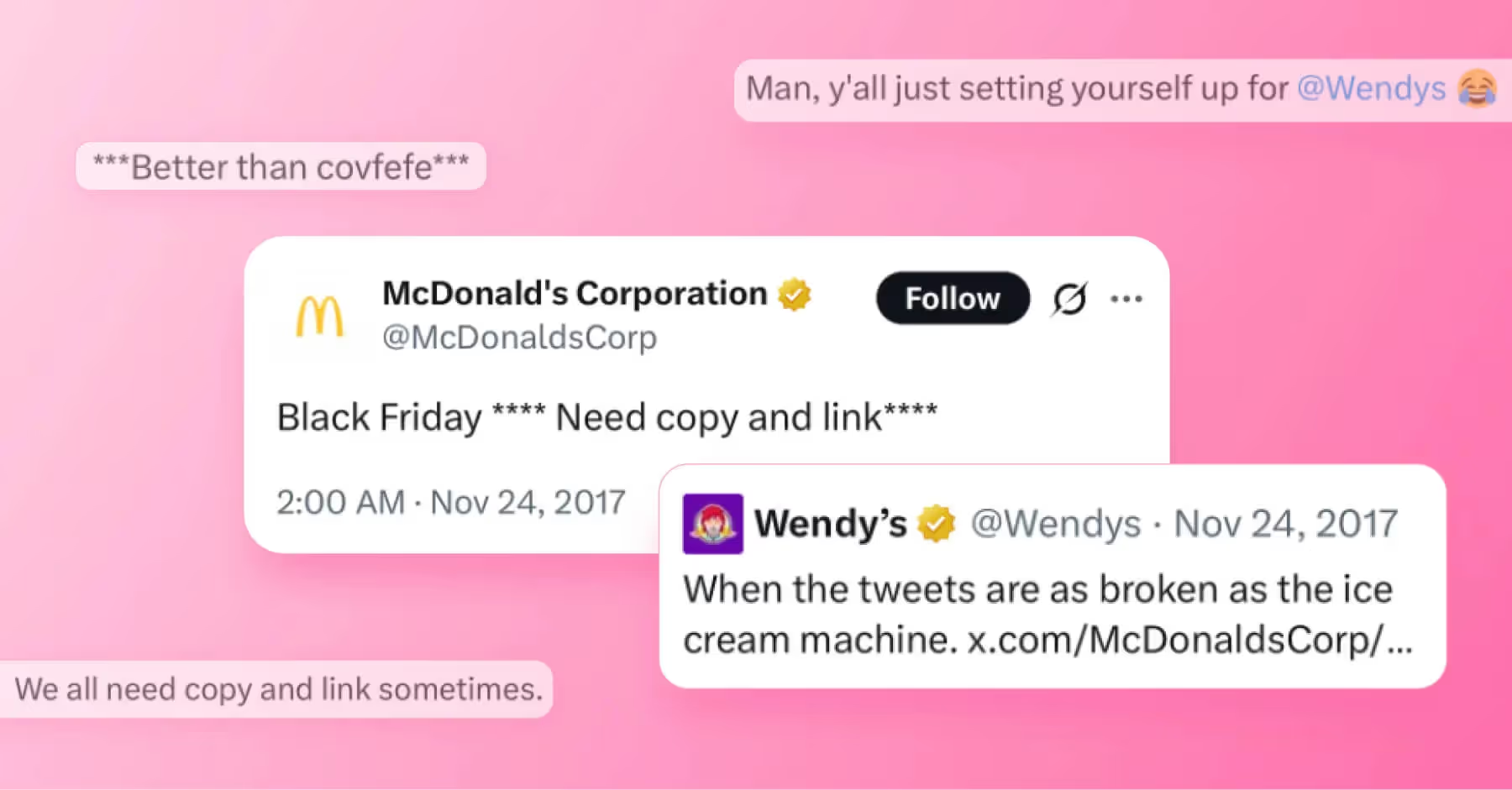What Is Niche Marketing? How To Reach Specific Communities
Your most engaged followers are members of niche communities — here’s how to reach them authentically and effectively.

Niche marketing on social media is about narrowing your focus to speak directly to a specific audience. Instead of casting a wide net, brands that embrace this strategy create content that resonates with a smaller community of people who share a particular interest, need or identity. This approach leads to stronger engagement because the content feels personal, relevant and valuable to the audience it’s made for.
For brands, reaching out to niche audiences is a powerful way to stand out in a crowded feed. You’re not competing for everyone’s attention; you’re showing up consistently for the right people. This helps build trust, loyalty and advocacy like UGC or social proof among a targeted demographic. This tactic is especially effective on social media where algorithms reward engagement and relevance over reach.
TL;DR:
- Only market to niches that fit your brand. Users can smell insincerity from a mile away, so stick to marketing to niches that make sense for your brand and product.
- Niche marketing can be more effective than mass marketing. On a smaller scale, niche marketing is often more effective because of the personalized nature of your content and the loyalty of your niche.
- Use this time with reduced competition to stand out. Many brands focus on reaching as many people as possible. Ensure you make the most of your time in the spotlight with this smaller community.
- Be present when launching your campaign. The beauty of a niche campaign is that you won’t be inundated with thousands of notifications; instead, you can make meaningful connections and respond to every comment.
- TikTok and Instagram are the best platforms to find niche communities. These platforms are built on the back of niche communities. Be sure to incorporate them into your strategy.
What Is Niche Marketing?
To understand niche marketing, we must first define a niche market. A niche market is a highly segmented group characterized by specific traits, commonalities and preferences. These markets are usually sub-groups of larger markets, but are much more specific and tailored. Niche marketing is the act of creating a strategy to reach these extremely segmented groups through traditional marketing efforts like paid ads, social media and more.
Something essential to note is the importance of only marketing to niches that make sense for your brand. The beauty of niche marketing is that you have so much information about exactly what these communities enjoy and what they function around. If what you offer is slightly off-base from what they like, it will come across as disingenuous and salesy, which is the opposite of what you want to achieve by reaching niche communities.
Why Is Niche Marketing Important?
Niche markets are considered niche for a reason. They are often so specific that only the people who are a part of the community realize they exist or are served them from their social media algorithms. Marketing to these niches is essential because they frequently fall into the background or are seen as ‘juice that’s not worth the squeeze, ’ but they’re actually the complete opposite.
Finding a niche market that perfectly aligns with your brand's goals and values is a match made in heaven. You’re gaining access to a highly specialized and loyal group of individuals that will make you wonder why you ever spent so much time marketing to the masses.
Niche Marketing Benefits
To no one's surprise, investing in niche marketing has many benefits. The following are just a few perks that brands can see results from right away.
Narrowed Audience
One of the hardest things about marketing is finding the right audience to promote to. Niche marketing affords true social segmentation and allows brands to zero in on communities that perfectly match their product, service or align with their overall brand identity. While a smaller may get less reach, the more specialized and personalized it is, the more likely you are to make a connection.
Reduced Competition
One of the underrated perks of niche marketing is how much smaller your competitive pool becomes. With many brands focusing on broader audiences, this is your chance to really dial in to stand out. The lack of competitors in this niche space will allow for you to focus on things like brand awareness, community building and in-depth personalization that your niche audience members won’t be able to resist.
Smarter Spend
Contrary to popular belief, niche marketing can often be a smarter use of your budget than wide-reaching campaigns. Many brands prefer to cast a wide net, as it historically leads to a better return, but as user behaviour has shifted, we know that users are looking for more genuine and authentic experiences online. Niche marketing allows you to create those tailored experiences with a more focused spend and the ROI to show for it.
Established Expertise
A big factor in niche marketing is showing up in these communities with something to offer. The members of these communities are highly specific and knowledgeable, meaning you need to be able to establish your own expertise in the space. Once you’ve done that, you’ll be a part of a loyal community you can engage with, that can validate your experience to larger audiences.
How To Develop a Niche Marketing Strategy in 5 Steps
If you’re ready to dive headfirst into niche marketing, there are a few steps you don’t want to miss. You’ll notice that marketing to these smaller groups requires more precision and preparation than general marketing tactics. Because of this, we laid out five easy steps for brands who are just getting started with niche marketing to follow.
1. Set Your Goal
You can’t go into niche marketing (or any marketing strategy for that matter) without a set of goals. These goals are your purpose and will help guide the decisions you make. You can either set goals specifically in relation to niche marketing, or you can plan your niche marketing tactics around pre-existing goals you have already set.
2. Identify the Community You’d Like To Engage
Once you define your goal, it’s time to figure out which niche communities make the most sense to target. Suppose you’re a publisher or book retailer. In that case, you may want to work on developing a relationship with general booktok creators, or maybe you want to dive deeper into an even more specific niche, like fantasy.
3. Create a Content Plan
Here, define how you plan to engage your niche community and determine which types of content you’ll want to share. You’ll want to plan how you want to show up in relevant creators’ comment sections, which trending hashtags you’ll use and brainstorm creative content ideas. You can add those ideas to your content calendar and create a list of creators to reach out to for potential brand partnerships.
4. Execute
The execution stage of your niche marketing strategy should feel like the most exciting step. During this time, you will get to work closely with your team on creating, planning and schedling incredible content throughout your content calendar, you will hopefully have secured a fantastic partnership or two from leaders in your specific niche and can share all of your fresh assets with your new, tiny world. Use this time to be present, forge deep connections and soak it all in.
5. Measure and Refine
Measuring the impact of your niche marketing strategy is the final and most important step. This is the time to decide whether you want to continue with this specific niche or possibly pivot. Have you reached your goals? Are you still in the awareness phase? Measure your results, refine and optimize as needed and plan where your tactics will take you next.
Niche TikTok Communities
TikTok is where niche communities thrive. The platform has created a space for thousands of niche markets to exist and flourish, all while offering exposure to people who may not have even been aware that niches of that kind exist. You can find a ‘Tok’ community for almost anything; here are some of our favorites.
BookTok
BookTok may have been one of the first communities to really emerge on the platform and create the ‘community name + Tok’ naming convention. The community thrives on all things literature with members sharing their favorite books, weekly, monthly or yearly round-ups and even fancasts for book-to-screen adaptations. This niche has evolved into even deeper niches, like ‘AustenTok’ or ‘FantasyTok. The popularity of this niche has made it one of the larger and more successful communities not just on TikTok, but on social media as a whole.

How brands can capitalize on BookTok: Go around the office and film your staff talking about their favorite book or what they’re reading right now. Bonus points if you start a book club that can translate into recurring content and become an integrated part of your brand’s culture and online identity.
FinTok
FinTok is a fast-growing niche that only gains prevalence as time and the ever-unpredictable economy go on. Most of the content in this community focuses on budgeting, overarching financial advice and information about various financial services. Financial podcasts and clips are especially popular in this niche as people enjoy seeing real people get real advice about their very real economic situation.

How brands can capitalize on FinTok: Financial marketing isn’t easy, especially for brands outside of the financial services industry. Dip your toes in the water by sharing content in relation to how you price items or share a look into what your general budget looks like for a campaign. Users love this type of transparency.
CleanTok
Have you found yourself cleaning your floors extra deeply or spending a little too long choosing the perfect Scrub Daddy and soap combination? This is probably thanks to CleanTok. CleanTok has taken the internet by storm, creating a community of users who love to show off just how clean they can get their spaces. This niche is full of how-tos, tips and some of the most satisfying ASMR you can find.

How brands can capitalize on CleanTok: Use the time you spend organizing and cleaning up your office (even decluttering works here!) as a content opportunity. CleanTok users respond well to impressive before-and-afters and, of course, the satisfaction that comes with a good deep clean.
Niche Instagram Communities
As one of the world's most used social media platforms, it’s no surprise that Instagram is home to some of the more popular niche communities. The platform lends itself perfectly to fostering community and connecting with others in a way impossible anywhere else. These are some of the more prevalent niche markets you’ll find.
Parenting
We all know that being a parent is one of the hardest jobs in the world, so it’s no surprise that the parenting community on Instagram is so prevalent. Many users leverage the platform to give (and ask for) advice, share what a day in their life with children looks like and many of the other fun things that come with being a parent. This niche allows for people who may not have a community in real life to make connections and share their stories, making it so much more than just a social media trend.

Baby brand Coterie harnesses the power of the parenting community on Instagram to boost engagement and craft effective campaigns. Tapping into this niche makes it easier for the brand to connect with parents, understand what they’re looking for, and adjust its strategy accordingly. Learn more about Coterie's approach to social in our webinar, How Children and Baby Brands Can Master Social Media Marketing.
Health and Fitness
The health and fitness niche is one of the stronger communities (pun wholeheartedly intended) you’ll find on the app. This type of content isn’t something many people have direct access to in their day-to-day lives outside of social media, so Instagram really acts as a meeting point for people to share their workout routines, their supplement lineup or just ways they’re choosing to stay active every day.

Ritual is a multivitamin brand that deeply cares for and understands Instagram's health and wellness community. The brand leverages Dash Social to establish itself as a leader in the space, using Boards to segment content and ensure its posts reaches this niche and resonates with it.
Travel
Travel has long been a hobby and something people like to document on social media, especially Instagram. Because of this, the app has become a hub for a pretty sizeable travel community that uses its space to share gorgeous photos or videos, create itineraries, document trips and even plan getaways with other travelers. This niche is one that we don’t see downsizing anytime soon.

For Breeze Airways, the travel and hospitality community is at the core of everything it does. The airline is newer to the industry than its legacy counterparts, making it all the more important to focus on this specific niche and really get it right by utilizing UGC and other community-building tactics.
More Niche Marketing Examples
Are you interested in seeing some of the above niche marketing benefits in action? Some of the world's biggest brands are using niche marketing, and it's paying off.
Red Bull
Red Bull is known for promoting extreme sports, sponsoring events and players, and heavily featuring this content in its social content, even more prominently than its beverage. The brand has fully entrenched itself into the extreme sports community by focusing more on the community members than on selling to them.

Why this works: By focusing on niche athletes and their successes, Red Bull positions itself as a leader in the sports marketing space. They show up far beyond social media and have become a brand these communities want to work with and partner with.
A24
A24 engages its core community, film lovers, who are interested in a specific type of independent and often artistic films and movies. The brand caters its merchandise, offline initiatives and social content to this audience to let them know they’re paying attention and matter.

Why this works: A24 could easily blow its entire marketing budget on promoting its films to the masses. However, it knows the importance of the film community, film enthusiasts and how this specific niche helps keep this industry alive, especially after a couple of uncertain years.
Vans
Vans leverages its roots in the skate community to engage its fans in the sport and with things relevant to their community, like music (Vans Warped Tour!), video games and, of course, its shoes. The brand makes decisions based on what it believes will be best for skaters, and it shows on social media.

Why it works: Vans constantly shows the skate community that it’s listening by participating in (or even spearheading) anything and everything that would be of interest to skaters. This creates not only repeat customers but also an excellent word-of-mouth strategy that can’t be bought.
Niche Marketing FAQs
What is a niche market?
A niche market is a narrowly defined segment of a larger market, often characterized by extremely distinct customer needs and characteristics.
What are the disadvantages of niche marketing?
While niche marketing has more pros than cons, some disadvantages include a smaller audience size, potentially higher costs and the risk of limiting or pigeonholing your brand into a hyper-specific market.
What’s the difference between micro marketing and niche marketing?
Micro marketing functions within niche marketing by targeting even smaller and more specific groups within an already niche segment. It is a highly personalized and specialized marketing tactic that can be used if niche marketing feels too broad.






